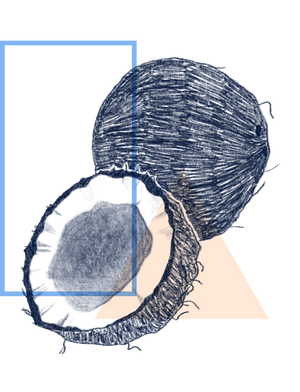MOLECULE
- Increases CMC to lower irritation
Regimen Lab Skincare Encyclopedia
Cocamidopropyl Hydroxy Sultaine
V 1.0 08Aug2020

Regimen's Take
Cocamidopropyl Hydroxysultaine is an amphoteric surfactant (meaning it has both positive and negative charges). We add this to cleansers because it stabilizes surfactant micelles so that they degrade less into surfactant monomers (which are irritating if left on skin because they can destroy barrier lipids).
TLDR
- Added to a surfactant system, Cocamidopropyl Hydroxysultaine has the net effect of making a gentler cleansing product.
- It also has a good foaming profile without the harshness typically associated with foaming surfactants.
What is Cocamidopropyl Hydroxysultaine?
Cocamidopropyl Hydroxysultaine is an amphoteric surfactant that lowers the charge density of the micelles formed by anionic surfactants.[^1] The addition of it in a cleanser results in more stable micelles that have lower chances of breaking into surfactant monomers that can enter the SC and disrupt lipids and damage proteins. In this formulation, adding Cocamidopropyl Hydroxysultaine lowered the low monomer concentration or low critical micelles concentrations (CMCs), which coincides with the results that adding amphoteric co-surfactants results to lower irritation results.
However, one caveat is that not all amphoteric surfactants are created equal. Some amphoterics are damaging to the intercellular lipids. Anionics, on the other hand, are known to be damaging to proteins in the SC. The perfect balance can be done with just enough amphoteric surfactants to decrease negative surface charge without solubilizing intercellular lipids.[^2]
In addition to finding the proper balance of anionic and amphoteric surfactants to reduce CMC, several other factors such as surface charge, size, and shape of micelles, as well as the dynamics of the surfactant monomer-micelle equilibrium and properties of the aqueous phase, are important in ensuring the mildness of the surfactant system. In fact, the addition of 10% glycerin (as with our cleanser) reduces the perturbation of anionic micelles into the SC. Increasing the size of the micelles also ensures that they cannot penetrate the SC.[^3][^4] The addition of Hydrophobically Modified Polymers (or hydrophobically modified alkaline soluble emulsion “HASE”) stabilizes the hydrophobic cores of the micelles, causing them to increase in size and form sizeable organized surfactant structures. These serve as a fail-safe to catch monomers that did not form micelles. Other methods to lower irritation of surfactants, like the addition of fatty acid (stearic acid) and occlusive ingredients like petrolatum, have been tested. However, these are more temporary methods that mask the damage if the surfactant structures are not optimized.
Cocamidopropyl Hydroxysultaine vs Cocamidopropyl Betaine
The advantage of using this over its cousin Cocamidopropyl Betaine is in its foaming ability. Cocamidopropyl Hydroxysultaine gives excellent foaming characteristics that match the creamy and luxurious foam of Sodium Cocoyl Glutamate and Sodium Cocoyl Glycinate, forming those medium pearl like-sized bubbles in a creamy sea of tiny bubbles. (Trust us, for a few months, we talked nothing but bubbles). This enhanced foaming ability allows users to use fewer surfactants to cover the face with foam, thereby lowering the possibility of irritation caused by excess surfactants, leaving your skin super soft, moist and hydrated without a squeaky clean feel.
References:
[^1]: Cassiday, L., & AOCS. (2016). Surfactants and skin. In INFORM: International News on Fats, Oils, and Related Materials (Vol. 27, Issue 1, pp. 694–699). https://doi.org/10.21748/inform.01.2016.694
[^2]: Walters, R. M., Mao, G., Gunn, E. T., & Hornby, S. (2012). Cleansing formulations that respect skin barrier integrity. Dermatology Research and Practice, 2012, 495917.
[^3]: Ghosh, S., & Blankschtein, D. (2007). The role of sodium dodecyl sulfate (SDS) micelles in inducing skin barrier perturbation in the presence of glycerol. Journal of Cosmetic Science, 58(2), 109–133.
[^4]: Ghosh, S., Hornby, S., Grove, G., Zerwick, C., Appa, Y., & Blankschtein, D. (2007). Ranking of aqueous surfactant-humectant systems based on an analysis of in vitro and in vivo skin barrier perturbation measurements. Journal of Cosmetic Science, 58(6), 599.
